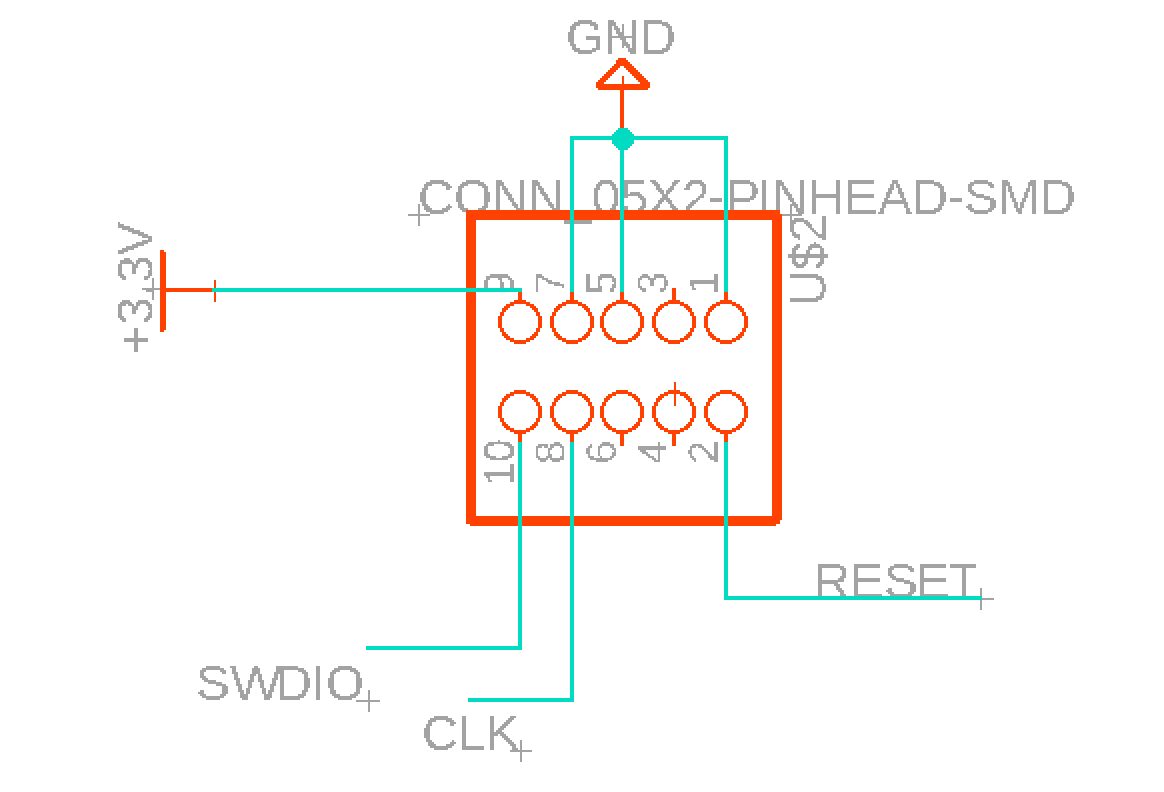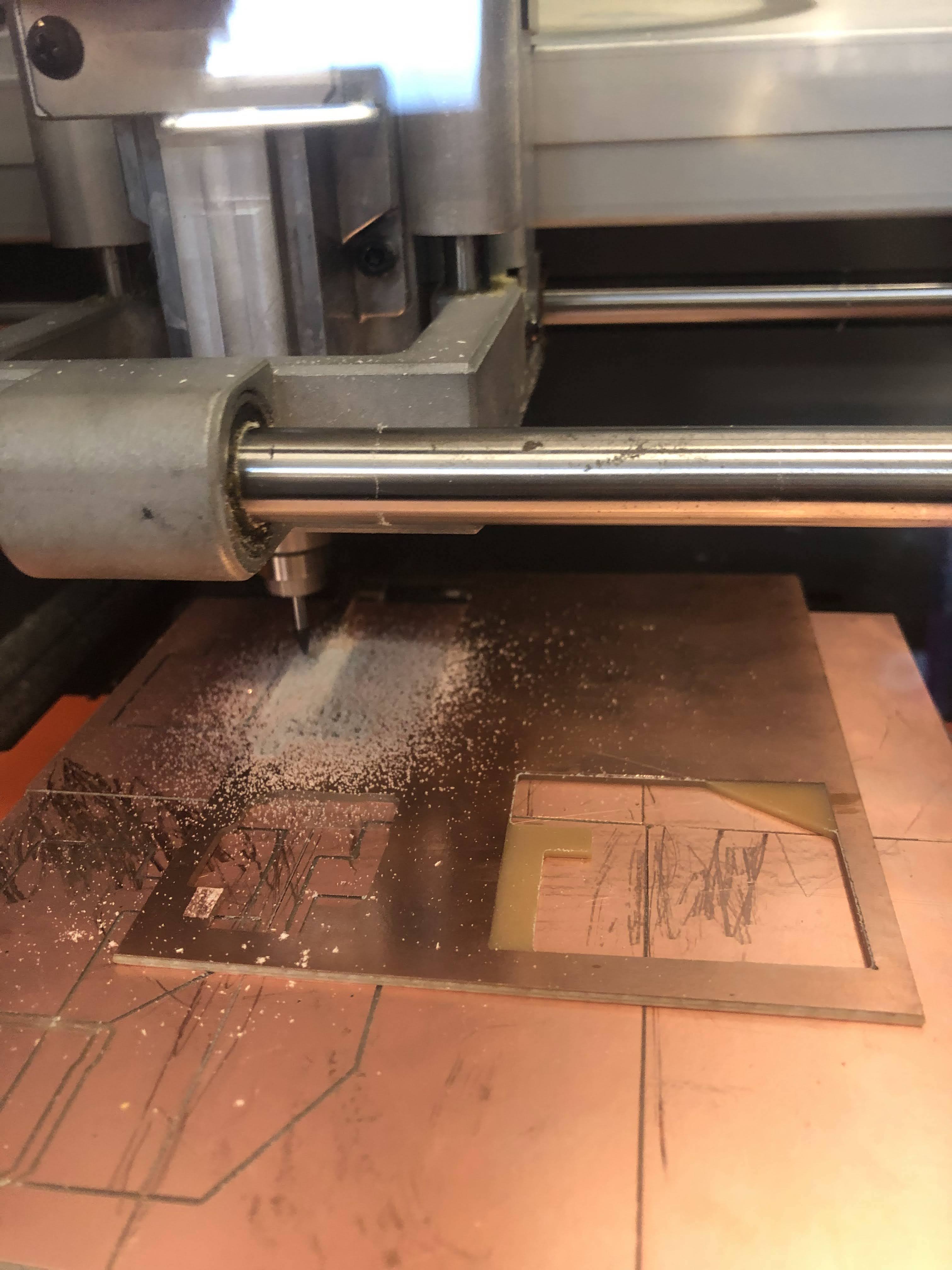How To Make (Almost) Anything Neil Gershenfeld
MCKENZIE ROSS HUMANN
MIT Department of Urban Studies and Planning
ELECTRONICS DESIGN
10.12.22
group project:
use the test equipment in your lab to observe the operation
of a microcontroller circuit board
individual project:
redraw an echo hello-world board,
add (at least) a button and LED (with current-limiting resistor)
check the design rules, make it, and test that it can communicate
extra credit: simulate its operation




echo hello-world schematic (with wrong/mirrored connections for 10-pin connector)

10-pin connector in Eagle

image from another student's work showing 10-pin connector in KiCad. I was confused because the numbers were mirrored in this one compared to in my schematic

echo hello-world routing (with wrong/mirrored connections for 10-pin connector)

replaced 10-pin smd with arm-debugger connector (before second-guessing myself and going back)

echo hello-world with led and button traces

echo hello-world outline

using mods to set up the machine

view while milling

freshly milled board

board after I soldered the parts; note the large amount of solder needed to bridge the gaps between the capacitor and the capacitor pads.

board with one 10-pin top; will have to get another one of these and connect them together to use my converter board.